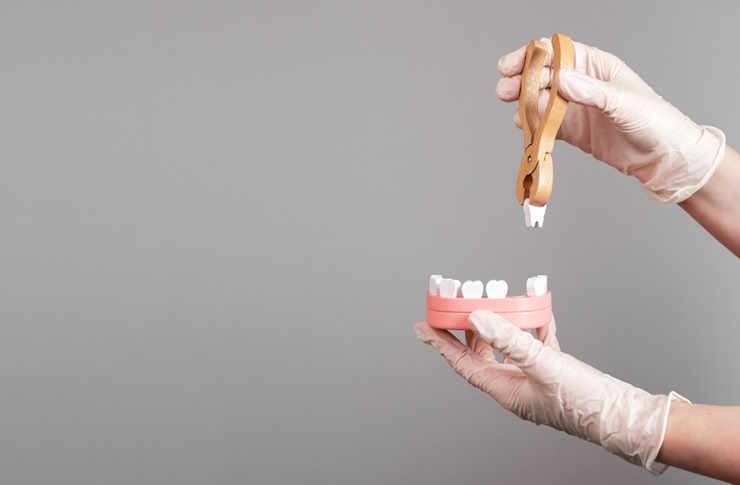Screwless Dental Implants: Understanding This Alternative Approach
Dental implants have transformed restorative dentistry, offering patients a durable and natural-looking solution for missing teeth. Traditional implants rely on screw-based systems to anchor artificial teeth into the jawbone. However, recent innovations have introduced screwless alternatives that promise simplified procedures, reduced discomfort, and potentially faster healing times. Understanding these emerging options can help you make informed decisions about your dental health and explore what might work best for your individual needs.

Understanding Screwless Dental Implant Technology
The landscape of dental restoration continues to evolve with technological advancements that prioritize patient comfort and procedural efficiency. Screwless dental implants represent one such innovation, challenging the conventional screw-retained approach that has dominated implant dentistry for decades. These systems aim to streamline the implantation process while maintaining the structural integrity and longevity that patients expect from permanent tooth replacement solutions. As dental professionals explore alternative methods, screwless options are gaining attention for their potential to reduce surgical complexity and improve patient experiences.
Traditional dental implants typically involve a titanium post surgically placed into the jawbone, which then integrates with the bone over several months. Once healed, an abutment is attached to the post using a screw mechanism, and finally, a crown is secured on top. While this method has proven highly successful, it requires multiple components and precise mechanical connections that can occasionally lead to complications such as screw loosening or fracture. Screwless systems seek to eliminate or reduce these mechanical vulnerabilities through innovative design approaches.
What Are Screwless Dental Implants?
Screwless dental implants refer to implant systems that minimize or eliminate the use of traditional screw mechanisms to connect the implant components. Rather than relying on threaded screws to attach abutments and crowns, these systems may use alternative retention methods such as friction fit, cement retention, or one-piece designs where the implant and abutment are manufactured as a single unit. The primary goal is to simplify the restoration process while maintaining stability and function.
One-piece implants, for instance, combine the implant post and abutment into a single component, eliminating the need for a separate screw connection. This design can reduce the number of surgical steps and potentially decrease the risk of mechanical complications. Cement-retained systems, another screwless approach, use dental cement to bond the crown to the abutment rather than screws, offering a seamless aesthetic result without visible screw access holes. Friction-fit systems rely on precise engineering to create tight connections between components without threading.
These alternatives are not entirely new concepts, but recent improvements in materials science, digital dentistry, and manufacturing precision have made them more viable and appealing to both practitioners and patients. The choice between screwless and traditional systems often depends on individual clinical circumstances, including bone quality, implant location, and aesthetic requirements.
Why Are Screwless Implants Becoming a Popular Choice?
Several factors contribute to the growing interest in screwless dental implant systems. First, the simplified design can reduce chair time and the number of appointments needed for implant placement and restoration. Fewer components mean fewer potential points of failure, which may translate to improved long-term reliability. Additionally, the absence of screw access holes in cement-retained restorations can enhance the aesthetic outcome, particularly for front teeth where appearance is paramount.
Patients often appreciate the potentially less invasive nature of certain screwless systems. One-piece implants, for example, may require less manipulation during surgery, potentially leading to reduced post-operative discomfort and faster initial healing. The streamlined design also appeals to dental professionals seeking to optimize workflows and reduce inventory complexity, as fewer components need to be stocked and managed.
However, it is important to note that screwless systems are not universally superior to traditional screw-retained implants. Each approach has its advantages and limitations. Screw-retained systems offer the benefit of retrievability, meaning the crown can be easily removed if adjustments or repairs are needed without damaging the restoration. Cement-retained screwless systems, while aesthetically pleasing, can make future maintenance more challenging. The decision should always be made in consultation with a qualified dental professional who can assess your specific situation and recommend the most appropriate solution.
Considerations for Choosing Screwless Implants
When evaluating whether screwless dental implants are suitable for you, several clinical and personal factors come into play. Bone density and volume are critical considerations, as some screwless designs may have specific requirements for successful osseointegration. The location of the missing tooth also matters; front teeth may benefit more from the aesthetic advantages of screwless systems, while back teeth might prioritize strength and retrievability.
Your dentist will conduct a thorough examination, including imaging studies, to determine the best implant type for your case. Factors such as your oral hygiene habits, overall health, and budget will also influence the recommendation. While screwless systems can offer certain advantages, they may not be appropriate for every patient or clinical scenario. A personalized treatment plan ensures that you receive the most effective and suitable solution for your dental restoration needs.
It is also worth discussing the long-term maintenance requirements of different implant systems with your dental provider. Understanding how future adjustments, repairs, or replacements might be handled can help you make a more informed decision that aligns with your lifestyle and expectations.
The Role of Technology in Screwless Implant Development
Advances in digital dentistry have played a significant role in making screwless implant systems more practical and predictable. Computer-aided design and manufacturing (CAD/CAM) technology allows for precise fabrication of implant components with tight tolerances, essential for friction-fit and one-piece designs. Digital planning software enables dentists to simulate implant placement virtually, improving accuracy and reducing surgical time.
Three-dimensional imaging, such as cone beam computed tomography (CBCT), provides detailed views of jawbone structure, helping clinicians select the optimal implant size, position, and type. These technological tools have enhanced the feasibility of screwless systems by addressing some of the precision challenges that previously limited their widespread adoption. As technology continues to advance, we can expect further refinements that make screwless implants even more accessible and reliable.
Conclusion
Screwless dental implants represent an evolving approach to tooth replacement that offers potential benefits in terms of simplicity, aesthetics, and patient comfort. While they are not a universal replacement for traditional screw-retained systems, they provide valuable alternatives for specific clinical situations. As with any dental procedure, the key to successful outcomes lies in thorough evaluation, personalized treatment planning, and collaboration with experienced dental professionals. By staying informed about the latest developments in implant dentistry, you can engage in meaningful conversations with your dentist and make choices that support your long-term oral health and quality of life.
This article is for informational purposes only and should not be considered medical advice. Please consult a qualified healthcare professional for personalized guidance and treatment.



